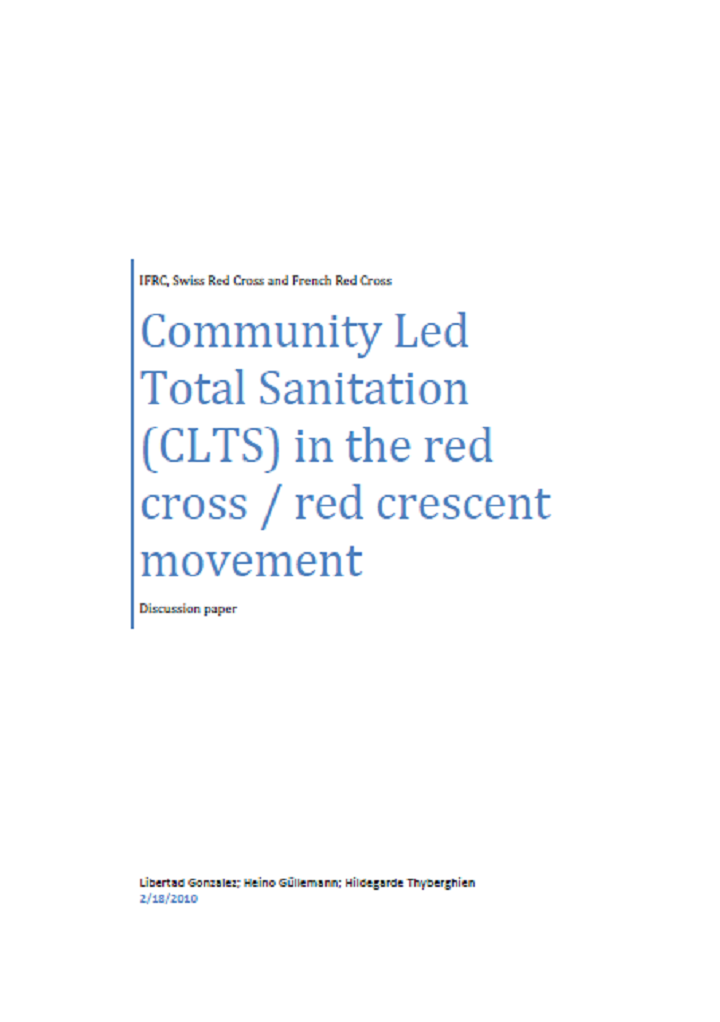Community Led Total Sanitation in the Red Cross / Red Crescent Movement. Discussion Paper
Gonzales, L., Güllemann, H., Thyberghien, H. (2010)

Published in: 2010
Pages: 22
Publisher:
IFRC, Swiss Red Cross, French Red Cross
Author:
Gonzales, L., Güllemann, H., Thyberghien, H.
Uploaded by:
SuSanA Admin
Partner profile:
common upload
953 Views
8 Downloads
PHAST shares the same participatory learning principles as CLTS, which aim at gaining self-esteem, believing in people‟s ability to solve basic problems with their own resources. PHAST and CLTS also have in common the technical scope in their original conception, since both have been designed to focus on sanitation issues in rural communities. However, PHAST in Red Cross / Red Crescent has been successful in integrating other elements, such as water supply and hygiene promotion. Main distinctions between these two methodologies can be found mainly in five areas, in relation to the drive forces for change (natural disgust vs. health benefit), collective responsibility (community focus vs. household focus), subsidies (against-subsidies vs. pro-subsidies), technical solutions (community-led vs. engineer-supported) and sustainability (one-off event vs. long term process). The only examples of CLTS implementation within the red cross / red crescent movement are the projects implemented by the Cambodian Red Cross in Takeo and Oddar Meanchey Provinces. The CLTS approach as applied in Cambodia is a positive example of local adaptation. The CLTS module applied in Cambodia contains the necessary adjustment to suit the local context: „shame‟ is replaced with „shock‟, PHAST tools are combined with CLTS triggering and post-triggering steps, external technical advice for latrine construction is provided, and social pressure is sensitively undertaken.
Bibliographic information
Gonzales, L., Güllemann, H., Thyberghien, H. (2010). Community Led Total Sanitation in the Red Cross / Red Crescent Movement. Discussion Paper. IFRC, Swiss Red Cross, French Red Cross
Filter tags
English Guidelines and manuals














